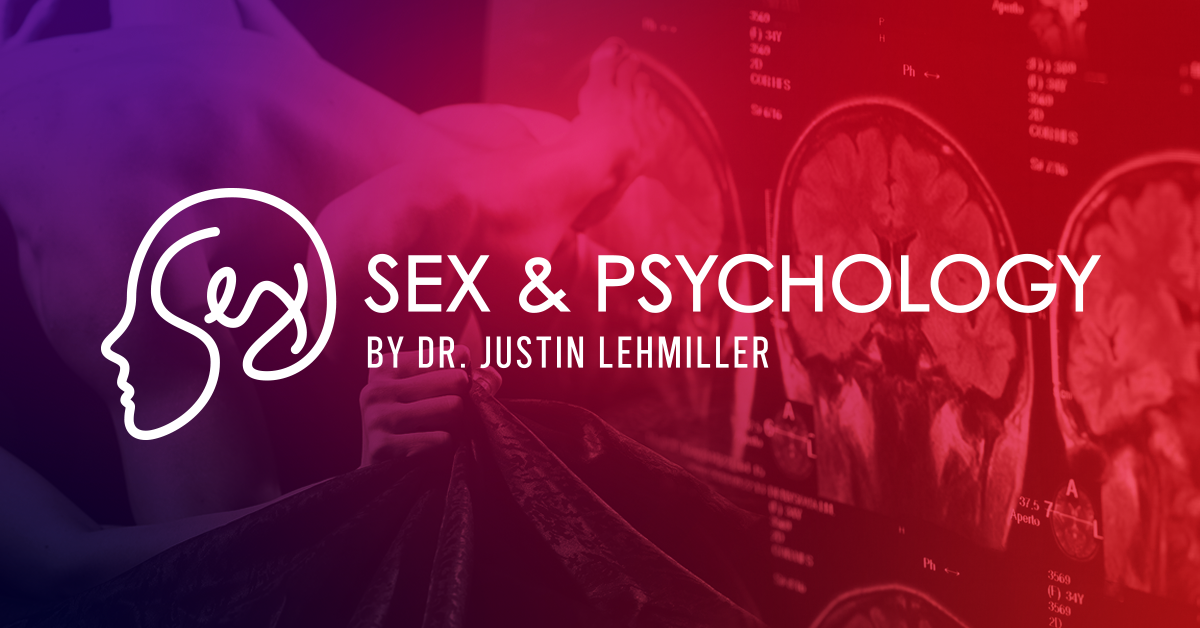How to Use the Sex and Psychology Blog in Your Classroom
July 12, 2023 by Olivia Adams
A couple of weeks ago, we released a blog post on an excellent resource developed by Dr. Steven Rouse that pairs episodes of the Sex and Psychology podcast with chapters from the latest edition of The Psychology of Human Sexuality textbook.
We are thrilled that Dr. Rouse has compiled a second resource based on posts from the Sex and Psychology blog, and we want to share it! You can access the resource here. Like the podcast resource, Dr. Rouse created guides for each chapter of the textbook that matches the chapter topic with a relevant blog post (note that this resource is compatible with the current 2nd edition of the book as well as the upcoming 3rd edition, now available for pre-order).
He also suggests specific excerpts to read aloud in class, which you can do in lieu of assigning the blog posts as additional reading material. This strategy provides an “in-the-moment opportunity” for learning and discussion that slots easily into classroom time and does not compete with outside coursework students may have.
Below, we’ve compiled an abridged version of Dr. Rouse’s resource. All of the relevant blog posts are also linked for ease of access. For a comprehensive list of Sex and Psychology blog posts, visit the main Sex and Psychology blog page. You can also sort blog posts by tagged topic (e.g, dating & relationships, sex ed, media & culture, etc.) if you want to search for posts in a particular area.
Chapter 1: Theoretical Perspectives on Human Sexuality
Chapter 1 reviews influences that drive us to have sex and major perspectives on human sexuality. We recommend exploring the post “Where Do Our Sexual Attractions Come From?” which examines biological, psychological, and social/environmental theories regarding dating, relationships, and attraction.
Chapter 2: Sexology Research: History, Methods, and Ethics
Chapter 2 is all about sex science; it’s history, experiments, ethics, and even how to evaluate sexology research. A great starting place for this topic is “Celebrating 68 Years of Women’s Sex Research,” a recurring blog post that celebrates the pioneering work of Alfred Kinsey with his 1953 book Sexual Behavior in the Human Female. Digging a little deeper, “The Ethics of Sexual Orientation Research: When is Sexuality Too Risky to Study?” is a great resource to jumpstart classroom discussions regarding the IRB process and sex research.
Chapter 3: Human Sexual Anatomy
Chapter 3 provides an overview of the internal and external anatomy of the penis and vulva, as well as psychological body concerns and genital health issues that may arise. On this topic, “Men and Women Have Skewed Ideas about What a ‘Normal’ Vulva Looks Like” can help jumpstart a class discussion about sexual knowledge, genital self image, and even cosmetic genital surgery.
Chapter 4: Human Sexual Response: Understanding Arousal and Orgasm
Chapter 4 is all about the factors that influence sexual arousal, as well as detailing the sexual response cycle. This is a huge topic, so there are many Sex and Psychology blog posts to choose from. For an exploration of the effects of sexual arousal on our judgment, check out “Sexual Arousal Puts Us In a Risk-Taking State of Mind.” For an angle on orgasm, “How Does ADHD Affect Orgasm?” allows for a dual-pronged discussion on both sexual response and neurodivergence.
Chapter 5: Gender and Gender Identity
Chapter 5 discusses biological and psychosocial influences on gender and sexuality, variations in gender expression, as well as sex differences in psychology. To tie into chapter four’s focus on arousal and orgasm, “4 Ways Men Say Couple’s Vibrators Improved Their Sex Lives” provides an interesting backdrop to discuss how masculinity norms can affect a couple’s sex life.
Chapter 6: Sexual Orientation
Chapter 6 reviews theories of sexual orientation, attitudes towards sexual orientation, and discusses measurement of sexual orientation in research. The Sex and Psychology blog regularly covers updated demographic data on LGBTQ+ identification through posts like “The Number of Americans Identifying as LGBTQ Has Doubled in a Decade.” For a deeper dive into sexual orientation, students can learn more about asexuality via “Are You Asexual? Here’s How Scientists Measure Asexuality.”
Chapter 7: The Laws of Attraction
Chapter 7 asks what attracts us to other people, in addition to reviewing individual differences within attraction processes. To explore this topic, psychology students may be particularly interested in “The Dark Side of Sexual Attraction: People are Often Drawn to Antisocial Personalities,” a post that delves into the relationship between attraction and dark triad personality traits.
Chapter 8: Intimate Relationships: Sex, Love, and Commitment
Chapter 8 is all about intimate relationships, including committed relationships, casual relationships, singlehood, and the secrets to relationship success. We recommend “The 7 Biggest Relationship Dealbreakers” as a great conversation starter for reasons why two people might not partner up. On the other hand, “1 in 6 Single Americans Report a Desire to Try Polyamory” can help students think about non-traditional relationship formations like polyamory.
Chapter 9: Sexual Behaviors
Chapter 9 discusses both solitary and partnered sexual behaviors, and provides information about the benefits of sex and orgasm. For a helpful blog post to guide a big picture discussion on sexual culture and behavior, we recommend “Who is Hookup Culture Helping, and Who is It Hurting?” And if you want to continue the conversation from chapter six in a different context, check out “Why Our Sexual Identities and Sexual Behaviors Don’t Always Line Up.”
Chapter 10: Lifespan Sexual Development
Chapter 10 explains how sexual development occurs from infancy through adolescence, in addition to considering biopsychosocial influences on the sexual activities of older adults. A perennial debate in this area is the influence of pornography on youth sexual development. Check out “Pornography is Dangerous for Teens? Chill Out, The Kids are Going to be (Mostly) Alright” to help tackle this topic in your classroom.
Chapter 11: Sex Education, Contraception, and Pregnancy
Chapter 11 reviews sex education, contraception, and pregnancy. With the reversal of Roe v. Wade in June 2022, discourse surrounding sex education and abortion has exploded in the U.S. We recommend “What’s the Most Effective Way to Reduce Abortion? Better Sex Ed and No-Cost Contraception” to support discussions on the facts of sex education in the U.S.
Chapter 12: Sexually Transmitted Infections and Safer Sex Practices
Chapter 12 explains factors that increase the spread of STIs, the psychological impact of STIs, as well as the differences between bacterial and viral infections. Two blog posts, each focused on a different awareness month related to sexual health, can help drive classroom discussion for this chapter. “5 Common Myths About Sexually Transmitted Infections” combats false but common ideas about STIs, and “10 Things You Should Know About Condoms for National Condom Month” presents accurate information about condoms.
Chapter 13: Sexual Dysfunction and Sex Therapy
Chapter 13 provides information about the causes of sex difficulties, types of sexual dysfunction, and some specific treatments that are provided during sex therapy. “What To Do When You And Your Partner Want Different Amounts Of Sex” examines a relationship problem that comes up frequently in sex therapy—mismatched sex drives. To examine a different perspective on sexual dysfunction, you can also consider “One Person’s Sexual Problem is Another Person’s Erotic Desire,” which explores how premature ejaculation is a distressing performance issue for some, but highly erotic to others.
Chapter 14: Variations in Sexual Behavior
Chapter 14 discusses patterns of sexual attraction and behavior that deviate from social and cultural norms. One sexual behavior that gets a lot of media coverage is BDSM (or bondage, discipline, dominance, submission, sadism, and masochism). To introduce this topic to the classroom, we recommend “Is BDSM Always About Sex?” which can help students to think through both the sexual and non-sexual aspects of kink.
Chapter 15: Sex Laws, Sexual Victimization, and the Sexual Marketplace
Chapter 15 outlines the history of sex laws and provides information about sex work, sex trafficking, and pornography. To examine this topic outside of the U.S. context, we recommend “Sex Work and Mental Health In Cultures Where Prostitution Is Legal,” which discusses the legal sexual marketplace in the Netherlands.
Thank you again to Dr. Steven Rouse for developing a fantastic teaching resource using posts from the Sex and Psychology blog. We hope you have a great time reading and learning in your classrooms!

Dr. Justin Lehmiller
Founder & Owner of Sex and PsychologyDr. Justin Lehmiller is a social psychologist and Research Fellow at The Kinsey Institute. He runs the Sex and Psychology blog and podcast and is author of the popular book Tell Me What You Want. Dr. Lehmiller is an award-winning educator, and a prolific researcher who has published more than 50 academic works.
Read full bio >


